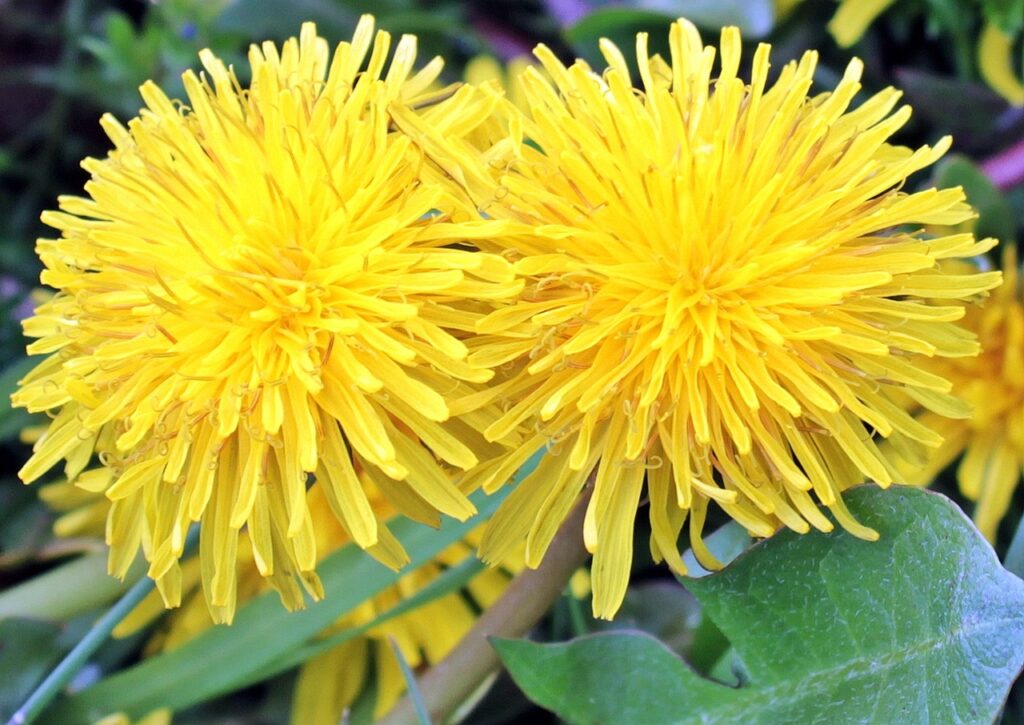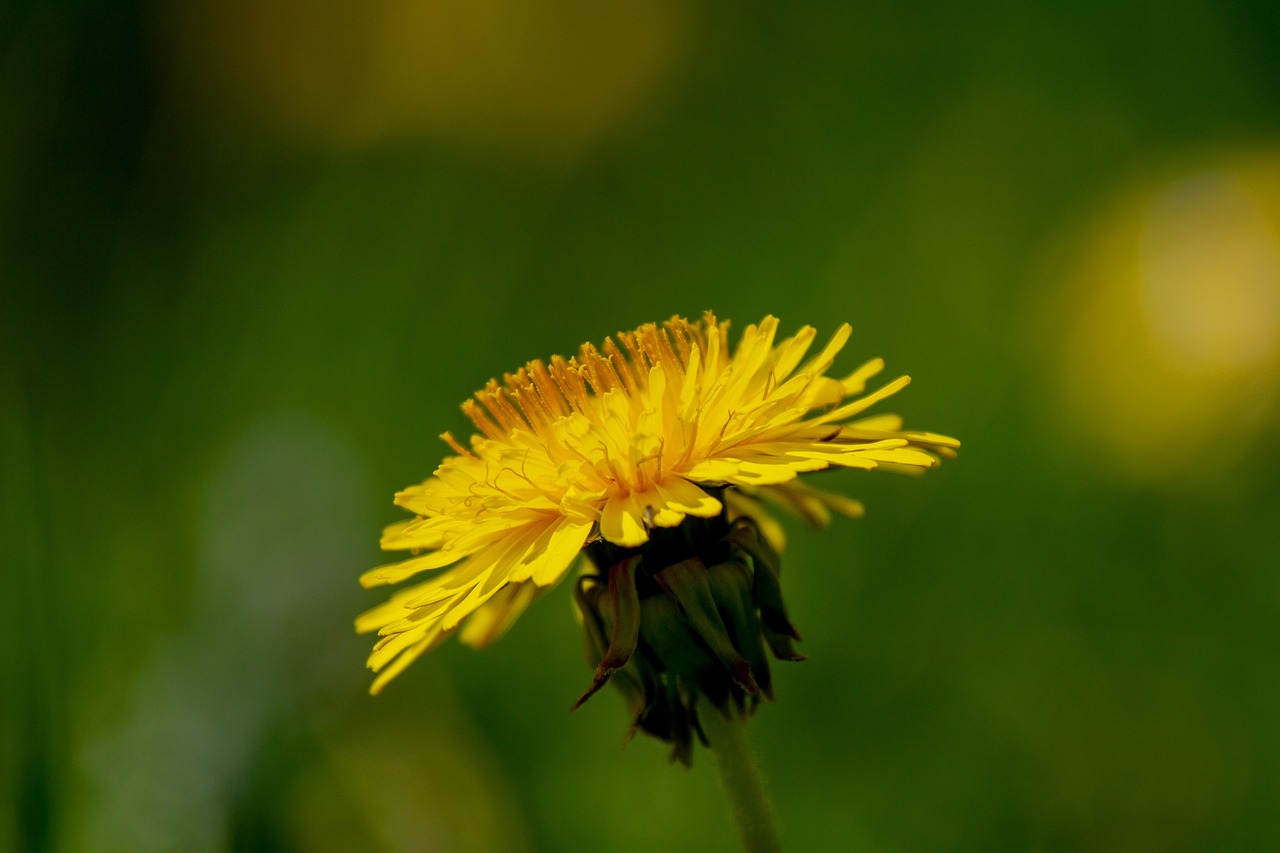Taraxacum officinale

Taraxacum officinale, commonly known as dandelion and seen as a weed, is native to Eurasia but has been naturalized in North America. It is a short-lived perennial that springs up easily most places through the spread of the seed on the wind. More than just wind pollination, dandelions also spread via tap roots that can survive long droughts and weed competition. Pollinators love the nectar of the dandelion as it is one of the only early spring flowers.1
Medicinal/Nutritional Uses
The dandelion was never cultivated as a vegetable in Europe, however, has been used for centuries as a nutritious wild green that provides more vitamins than spinach. Almost all of the parts of the plant are edible. The leaves are high in calcium, potassium, and iron, but are best eaten young and tender (before the flower bud appears) as they can quickly become bitter as the season goes on. The roots can be eaten as well and reportedly taste like turnip, however, be careful how many you ingest, as they can be both diuretic and a laxative. The blossoms are also edible and are sweetest when they are young.2
Traditionally, the dandelion has been used as a diuretic for medicinal purposes, as a green for soups, salads, and teas, and the roasted root has been used as a substitute for coffee.3 Indigenous groups in Canada, such as the Haudenosaunee, Anishnaabe, and Nehiyawak, harvest dandelions for food as well as medicine. The different parts of the plant have been used to treat back pain, anemia, liver spots, and sores.4
PLEASE NOTE: Dandelion sap contains latex so anyone with an allergy to latex should not handle fresh dandelions.5
- “Dandelion, <em>Taraxacum Officinale</Em>.” Wisconsin Horticulture, https://hort.extension.wisc.edu/articles/dandelion-taraxacum-officinale/. Accessed 1 May 2024.
↩︎ - “Dandelion, <em>Taraxacum Officinale</Em>.” Wisconsin Horticulture, https://hort.extension.wisc.edu/articles/dandelion-taraxacum-officinale/. Accessed 1 May 2024.
↩︎ - “Dandelion.” NCCIH, https://www.nccih.nih.gov/health/dandelion. Accessed 6 May 2024.
↩︎ - “Dandelion Tempura.” Edmonton & Area Land Trust, 2 Mar. 2020, https://www.ealt.ca/natures-nourishment-1/dandelion-tempura.
↩︎ - “Dandelion, <em>Taraxacum Officinale</Em>.” Wisconsin Horticulture, https://hort.extension.wisc.edu/articles/dandelion-taraxacum-officinale/. Accessed 1 May 2024 ↩︎
